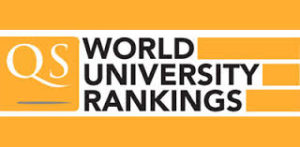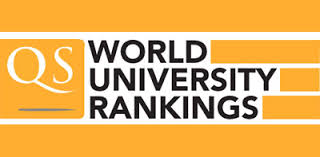 QS’s 13th edition of its world university rankings will be remembered by universities for the gains or losses it brought. Three universities dropped from the top 50; four dropped from the 51-100 band and another four dropped out of the top 200.
QS’s 13th edition of its world university rankings will be remembered by universities for the gains or losses it brought. Three universities dropped from the top 50; four dropped from the 51-100 band and another four dropped out of the top 200.
For national systems, every release of a new ranking edition is a reminder of the perils of reducing university funding, deregulation and the vagaries of policy-making at times of economic uncertainty. When rankings are released, it becomes clear that policy changes matter.
This year’s QS rankings bear an element of distortion, not because of the results themselves but as a by-product of unintended associations. One of these is the mention of Brexit, which is not a plausible way to explain the relative decline in standing of many English universities. Yet there are still 30 English universities in the top 200 – a number that is unchanged from 2012.
There is also a wave of improvement among universities and national systems in emerging and middle-income economies. For example, there are now five more institutions from emerging economies in the top 200 in 2016 compared to 2012. This improvement has been occurring progressively for at least the past seven years.
For once, the QS 2016 rankings show remarkable stability compared to earlier editions. Of the universities in the top 50 in 2016, 31 did not move more than two places either way. In addition, almost half of the universities in the 51-100 band did not move by more than four places either way.
One begins to see variability down the ranks. The point is that the higher the rank of an institution the higher the chances of an institution remaining within the same band group. For instance, institutions in the top 20 have a 90% probability of staying in the same band, whereas institutions in the 81-100 band have a 62% probability of staying put, dropping to about 50% probability for institutions in the 241-260.
Every year, though, some institutions move up or down significantly in the rankings. Of those who were in the top 400 in 2015, 47 institutions moved up 20 or more than 20 places in the 2016 ranking. The National Taiwan Normal University moved up the most (66 places) from 376th in 2015 to 310th in 2016, followed by Tokyo Medical and Dental University (from 391st in 2015 to 329th in 2016) and Universiti Putra Malaysia (up by 61 places) from 331st in 2015 to 270th in 2016.
The results highlight instances that demonstrate the successful trajectory of some universities. There are some universities that ranked low in the early years of QS rankings and are now a threat to institutions in the top 200 or even higher up the ranking. One key to the success of many universities is sustained investment, commitment to realising institutional mission and strong executive leadership.
Years ago there was a clear division between institutions with a research bent versus those with a teaching orientation. There was also a division between private versus public, or specialised versus comprehensive institutions, or even institutions with limited research impact or research training. These boundaries are fast disappearing in light of technological transformation, globalisation, marketisation and competition.
China continues to make strides into the top spots. It now has three universities in the top 50 (Tsinghua, Peking and Fudan universities). In 2012, China had nine universities in the top 400; now it has 15.
Technological universities, for instance, are well represented in the rankings. Massachusetts Institute of Technology is ranked first in the QS rankings. The next highest ranked technological institution is the California Institute of Technology (5th) and then ETH Zurich (8th). There are 15 technological institutions ranked in the top 100 and another 11 are in the 101-200 band. There are also another 10 institutions that are ranked in the range 201-400 range which have the potential to make it into the top 200 – in fact some of them have been there in earlier editions. Of these 36 technological institutions it is no surprise that six come from Germany, four from the United States and three from Australia. Overall, these institutions are based in 19 different countries.
To sum up, the appetite for rankings is far from easing. Universities from 49 different countries are among the top 400 and 31 other countries have universities in the 401 plus category. Rankings have become a necessary evil to the modus operandi of universities.

